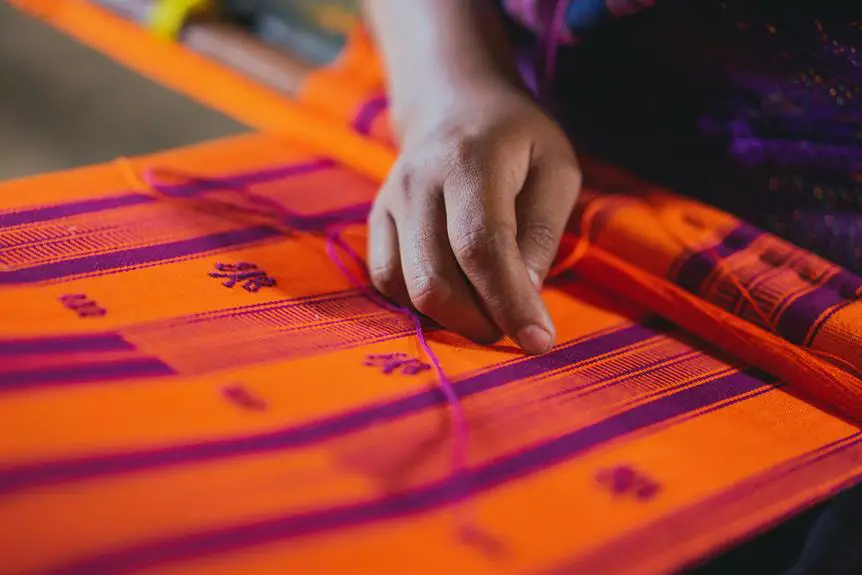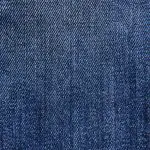When you're considering fabric bleaching, it's crucial to understand the various techniques suited for different materials. You might think all bleaching methods are the same, but each one has its own unique advantages and challenges. Knowing how to identify the right method for your fabric can make a significant difference in the outcome. Before you start, you'll want to learn about safety precautions and essential tips to achieve the best results. So, what are the common pitfalls to avoid, and how can you ensure your fabric looks its best?
Table of Contents
Key Takeaways
- Choose the appropriate bleaching method based on fabric type; oxidative for cotton, reductive for silk, and enzymatic for natural fibers.
- Always wear protective gear like gloves and goggles to safeguard against harmful chemicals during the bleaching process.
- Conduct patch tests on inconspicuous areas to check fabric reaction before full bleaching to prevent damage.
- Mix bleach solutions carefully, typically one part bleach to three parts water, and monitor soaking times to avoid over-bleaching.
Types of Fabric Bleaching
There are several types of fabric bleaching processes, each designed to achieve specific results and suited to different materials.
One common method is oxidative bleaching, which uses chemical agents like hydrogen peroxide or sodium hypochlorite to remove color. This process is effective for cotton and linen fabrics, giving them a bright, clean appearance.
Another technique is reductive bleaching, often used for fabrics like silk and wool. This method employs agents like sodium bisulfite to restore the original whiteness without compromising the fabric's integrity. It's gentler than oxidative bleaching, making it suitable for delicate materials.
You might also encounter enzymatic bleaching, which utilizes enzymes to break down color compounds. This eco-friendly option is especially beneficial for natural fibers, providing a less harsh alternative to traditional methods.
Safety Precautions to Consider
When you're working with fabric bleaching, safety should be your top priority.
Make sure you've got the right personal protective equipment and that your workspace is well-ventilated.
These precautions will help keep you safe while achieving the best results.
Personal Protective Equipment
To ensure your safety while bleaching fabric, always wear appropriate personal protective equipment like gloves, goggles, and masks.
Bleaching agents can be harsh on your skin, so rubber or latex gloves are essential. They protect your hands from chemical burns and irritation.
Goggles are crucial for safeguarding your eyes from splashes and fumes. When dealing with bleach, you don't want to risk any accidental exposure that could lead to irritation or injury.
Additionally, a mask can help prevent inhalation of harmful vapors. Choose a mask that filters out chemical particles to provide adequate protection.
It's also wise to wear old clothing or an apron that you don't mind getting stained. Bleach can easily ruin your favorite shirt, so it's better to be cautious.
Before you start, ensure your personal protective equipment fits well and is in good condition. Inspect your gloves for any holes and make sure your goggles are clean for clear visibility.
Ventilation Requirements
Proper ventilation is essential during fabric bleaching to minimize exposure to harmful fumes and ensure a safer working environment. By maintaining good airflow, you'll reduce the risk of inhaling toxic chemicals, which can lead to health issues.
Here are some key ventilation tips to consider:
- Open windows and doors: This allows fresh air to circulate and helps dissipate any fumes.
- Use exhaust fans: Positioning fans near work areas can effectively draw out harmful vapors.
- Work outdoors when possible: If the weather permits, doing your bleaching tasks outside is an excellent way to ensure proper ventilation.
Always monitor the air quality and take breaks to step outside if you begin to feel lightheaded or dizzy.
Step-by-Step Bleaching Techniques
You'll often find that following a clear, step-by-step bleaching technique can significantly enhance your fabric's brightness and overall appearance.
Start by gathering your materials: bleach, water, a container, gloves, and any protective gear you need. Always work in a well-ventilated area to avoid inhaling fumes.
Next, mix your bleach solution. Typically, a ratio of one part bleach to three parts water works well, but you can adjust it based on the fabric type. Before applying it to your entire piece, test a small, inconspicuous area to ensure the fabric reacts positively.
Once you're ready, immerse the fabric in the solution. Allow it to soak for about 5 to 30 minutes, depending on how deep the stain is and the fabric's sensitivity. Keep an eye on it to prevent over-bleaching.
After soaking, rinse the fabric thoroughly with cold water to stop the bleaching process. Then, wash it as you normally would to remove any remaining bleach residue.
Tips for Achieving Desired Results
Achieving the desired results in fabric bleaching often requires careful attention to the fabric type and the specific stains you're targeting. To enhance your bleaching process, keep these tips in mind:
- Know Your Fabric: Always check the fabric content. Natural fibers like cotton bleach better than synthetics, which may not respond as effectively.
- Pre-Treat Stains: For tough stains, apply a small amount of bleach directly on the affected area before the full bleaching process. This can help lift the stain more effectively.
- Test a Patch: Always perform a patch test on a hidden area of the fabric. This way, you can see how the material reacts to the bleach and avoid unwanted damage.
Common Mistakes to Avoid
Even with the right tips for fabric bleaching, it's easy to make mistakes that can lead to disappointing results. One common error is using too much bleach. Overdoing it can weaken the fabric and create uneven coloring. Stick to the recommended dilution ratios to ensure a balanced approach.
Another mistake is skipping the patch test. Always test a small, inconspicuous area first to see how the fabric reacts. You might be surprised by how different materials absorb bleach.
Don't forget to pay attention to the timing. Leaving bleach on for too long can damage the fibers and ruin your project. Set a timer and check periodically to achieve the desired effect without going overboard.
It's also crucial to avoid mixing different brands or types of bleach. Each product can have unique chemical compositions that might react unpredictably.
Lastly, ensure you're working in a well-ventilated area. Fumes can be harmful, so always prioritize your safety while bleaching.
Caring for Bleached Fabrics
When you care for bleached fabrics, it's essential to follow specific washing instructions to maintain their brightness.
You'll also want to know effective stain removal tips to keep your items looking fresh and clean.
Washing Instructions
To keep your bleached fabrics looking fresh, follow specific washing instructions that protect their color and integrity. Using the right techniques not only maintains the brightness of the fabric but also extends its lifespan. Here are some essential tips to consider:
- Use cold water: Cold water helps prevent fading and keeps the fabric's fibers intact, reducing wear and tear.
- Select a gentle cycle: Opt for a delicate or gentle wash cycle to minimize agitation, which can damage the fabric.
- Avoid bleach and harsh detergents: While your fabric is already bleached, using additional bleach or strong detergents can lead to unwanted discoloration and damage.
Stain Removal Tips
Dealing with stains on bleached fabrics can be tricky, but quick action and the right techniques can help restore their brightness.
When you spot a stain, act fast. Rinse the area with cold water to prevent the stain from setting in. For stubborn stains, you can mix a small amount of mild detergent with water and gently dab it onto the affected area using a clean cloth. Avoid rubbing, as this can damage the fabric.
If the stain persists, consider using a diluted bleach solution. Mix one part bleach with ten parts water, and test it on an inconspicuous area first to check for colorfastness. If it's safe, apply the solution with a cotton swab and let it sit for a few minutes before rinsing thoroughly.
Always remember to wash the fabric afterward to remove any remaining cleaning agents. For grease stains, sprinkle baking soda on the area and let it sit for a few hours to absorb the grease before treating it with detergent.
Storage Recommendations
Proper storage is essential for maintaining the brightness and integrity of your bleached fabrics. To keep your items looking their best, follow these simple guidelines:
- Choose a cool, dry place: Excessive heat and humidity can lead to discoloration and mildew, so opt for a well-ventilated area.
- Avoid direct sunlight: Sunlight can fade colors over time, so store your fabrics away from windows or in opaque containers.
- Use breathable storage bags: Instead of plastic, use cotton or linen bags to prevent moisture buildup while allowing your fabrics to breathe.
Frequently Asked Questions
Can I Bleach Colored Fabrics Without Damaging Them?
You can bleach colored fabrics, but it's tricky. Always test a small area first to see how the fabric reacts. Using diluted bleach and following care instructions can help minimize damage while achieving your desired effect.
How Does Fabric Type Affect Bleaching Results?
Fabric type significantly affects bleaching results; natural fibers like cotton absorb bleach more evenly, while synthetic fabrics may resist or react unpredictably. Always test a small area first to avoid unwanted damage or color changes.
Is Natural Bleaching Effective Compared to Chemical Methods?
Natural bleaching can be effective, but it often takes longer and may not achieve the same level of brightness as chemical methods. You'll need to consider the fabric type and desired results when choosing your approach.
Can I Reuse Bleach Solutions for Multiple Fabrics?
You can reuse bleach solutions for multiple fabrics, but it's essential to consider the fabric types and colors. Always test the solution first, as residual bleach may affect the outcome on different materials.
What Are Eco-Friendly Alternatives to Traditional Bleach?
You can try using vinegar, baking soda, or hydrogen peroxide as eco-friendly alternatives to traditional bleach. These options effectively brighten fabrics without harsh chemicals, making them safer for the environment and your skin.
- How Does Ring Spun Cotton Affect Garment Fit and Shape Retention? - August 13, 2024
- What Are the Challenges in Producing Ring Spun Cotton? - August 13, 2024
- Is Ring Spun Cotton Suitable for Plus-Size Clothing? - August 13, 2024





